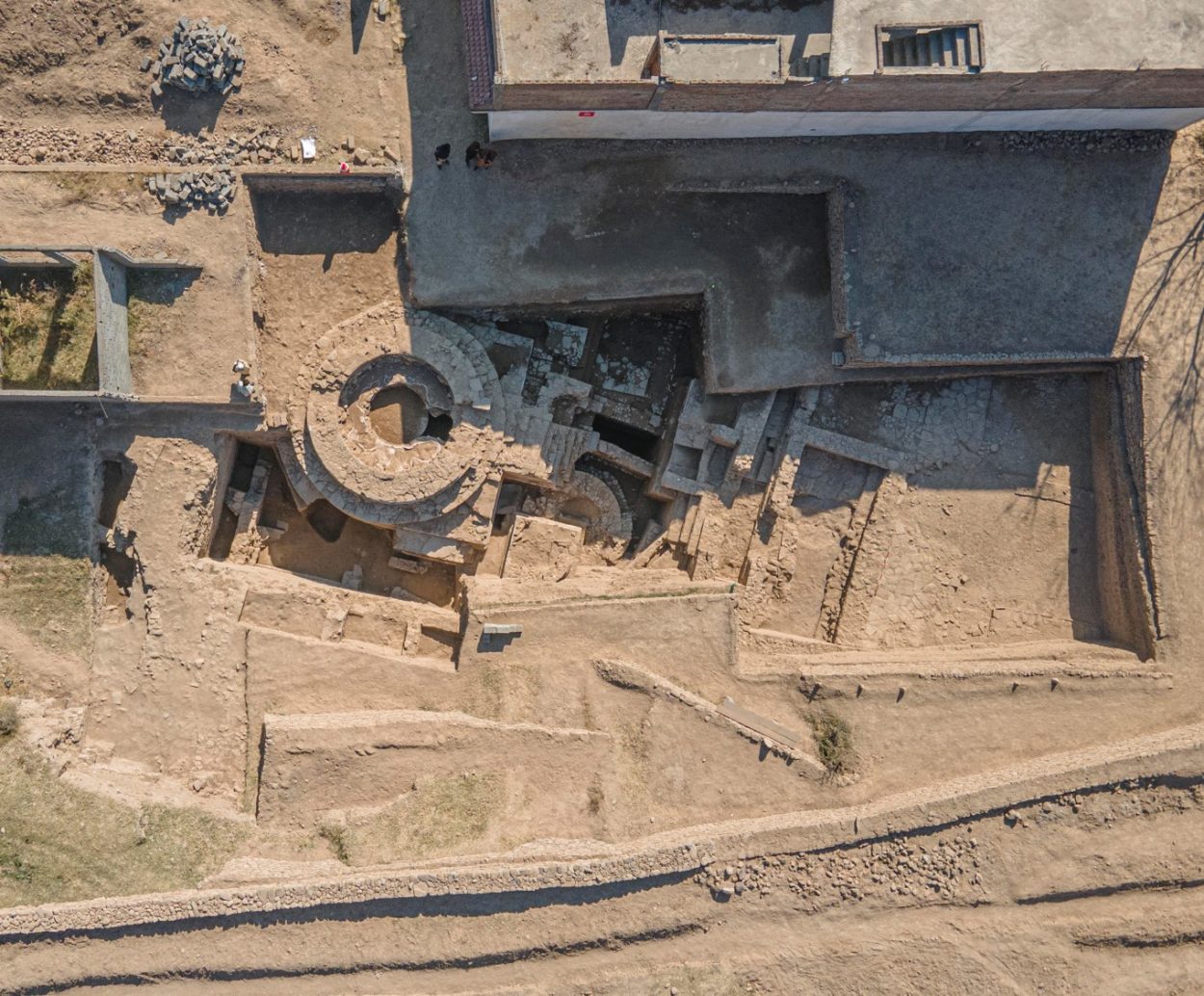Archaeologists have found one of the oldest known Buddhist temples in the city of Barikot, in the Swat region of Pakistan.
Excavations were conducted as part of an Italian mission in collaboration with the International Association for Mediterranean and Oriental Studies (ISMEO).
The team was exploring Barikot’s ancient acropolis, where they decided to excavate an area previously plundered by looters which was littered with robber trenches.
This revealed the remains of an ancient Buddhist temple measuring up to three metres tall, built on an apsidal podium on which stands a cylindrical structure that houses a small stupa.
On the temple’s front is a minor stupa and the podium of a monumental pillar or column, in addition to a series of vestibule rooms which used to lead to an entrance that opened onto a public courtyard overlooking an ancient road.
The temple dates to roughly the second half of the 2nd century BC, but may be even older from the Maurya period in the 3rd century BC (yet to be confirmed through carbon-14 dating).
Excavations also revealed that the monument was built on the remains of an earlier structure flanked by a small, archaic stupa which precedes the Indo-Greek period. This dates to around 150 BC during the reign of the Indo-Greek King Menander I or of one of his first successors, for which according to Indian Buddhist tradition Menander I converted to Buddhism.
In the final days of the mission, the researchers found that parts of the Indo-Greek monument had been built on an even older structure whose strata included pottery materials and terracotta figurines which are likely to have been used in Barikot during the 4th and 3rd centuries BC.
Professor Luca Maria Olivieri of Ca’ Foscari University of Venice said: “The discovery of a great religious monument created at the time of the Indo-Greek Kingdom testifies that this was an important and ancient centre for cult and pilgrimage. At that time, Swat already was a sacred land for Buddhism.”
Header Image Credit : The Italian Archeological Mission in Pakistan ISMEO/CA’ Università Ca’Foscari





